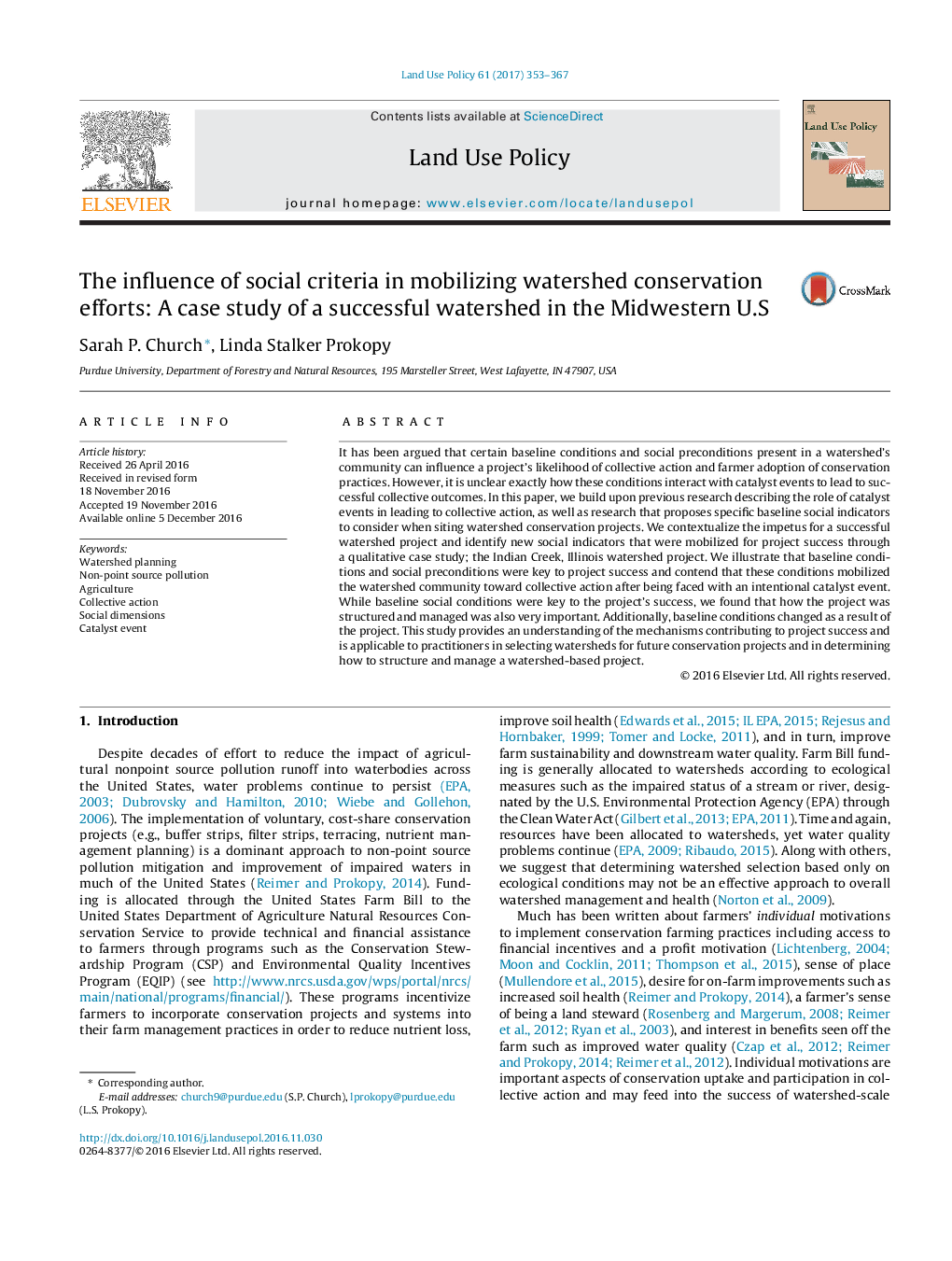| Article ID | Journal | Published Year | Pages | File Type |
|---|---|---|---|---|
| 6461326 | Land Use Policy | 2017 | 15 Pages |
â¢A qualitative case study of a successful watershed project was conducted.â¢Funding and desire to show voluntary conservation efforts mobilized action.â¢Several baseline social conditions contributed to project success.â¢Crucial to success were community-led project structure and key community leaders.
It has been argued that certain baseline conditions and social preconditions present in a watershed's community can influence a project's likelihood of collective action and farmer adoption of conservation practices. However, it is unclear exactly how these conditions interact with catalyst events to lead to successful collective outcomes. In this paper, we build upon previous research describing the role of catalyst events in leading to collective action, as well as research that proposes specific baseline social indicators to consider when siting watershed conservation projects. We contextualize the impetus for a successful watershed project and identify new social indicators that were mobilized for project success through a qualitative case study; the Indian Creek, Illinois watershed project. We illustrate that baseline conditions and social preconditions were key to project success and contend that these conditions mobilized the watershed community toward collective action after being faced with an intentional catalyst event. While baseline social conditions were key to the project's success, we found that how the project was structured and managed was also very important. Additionally, baseline conditions changed as a result of the project. This study provides an understanding of the mechanisms contributing to project success and is applicable to practitioners in selecting watersheds for future conservation projects and in determining how to structure and manage a watershed-based project.
